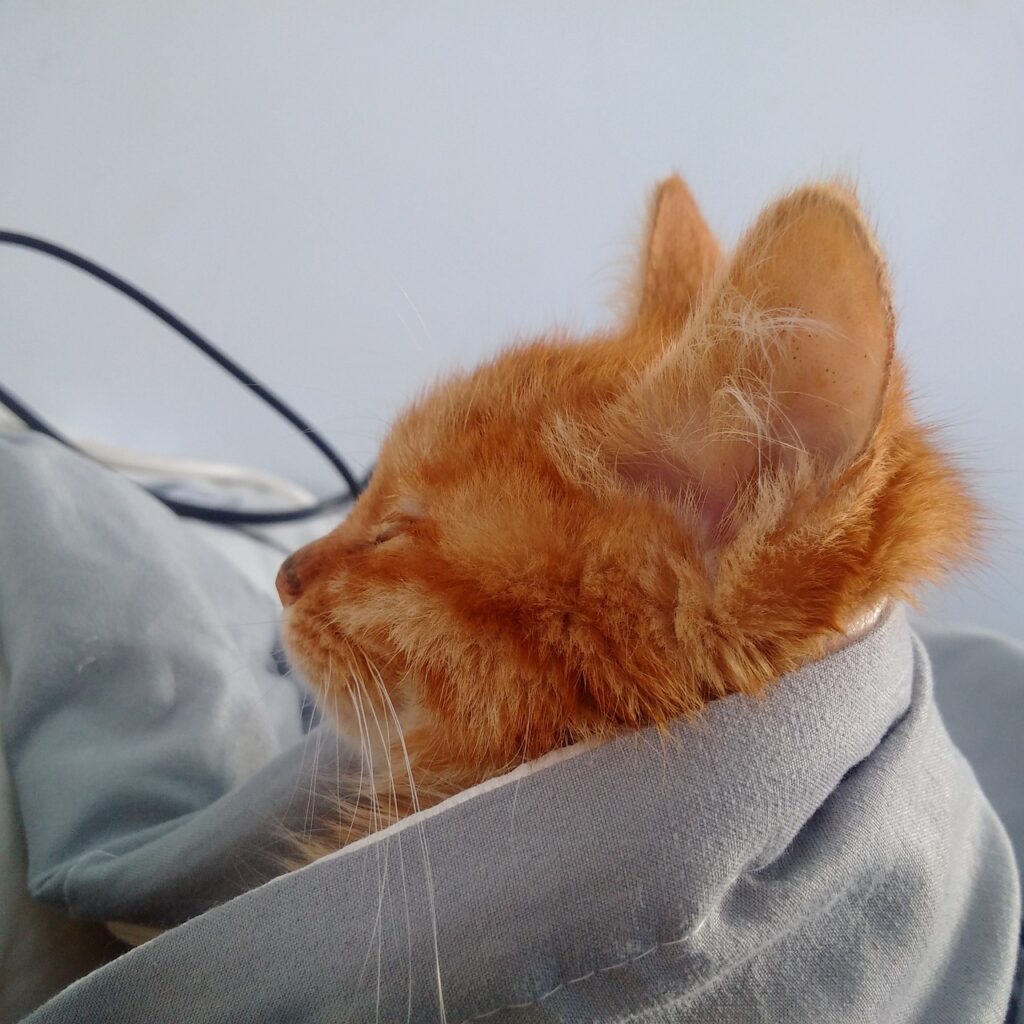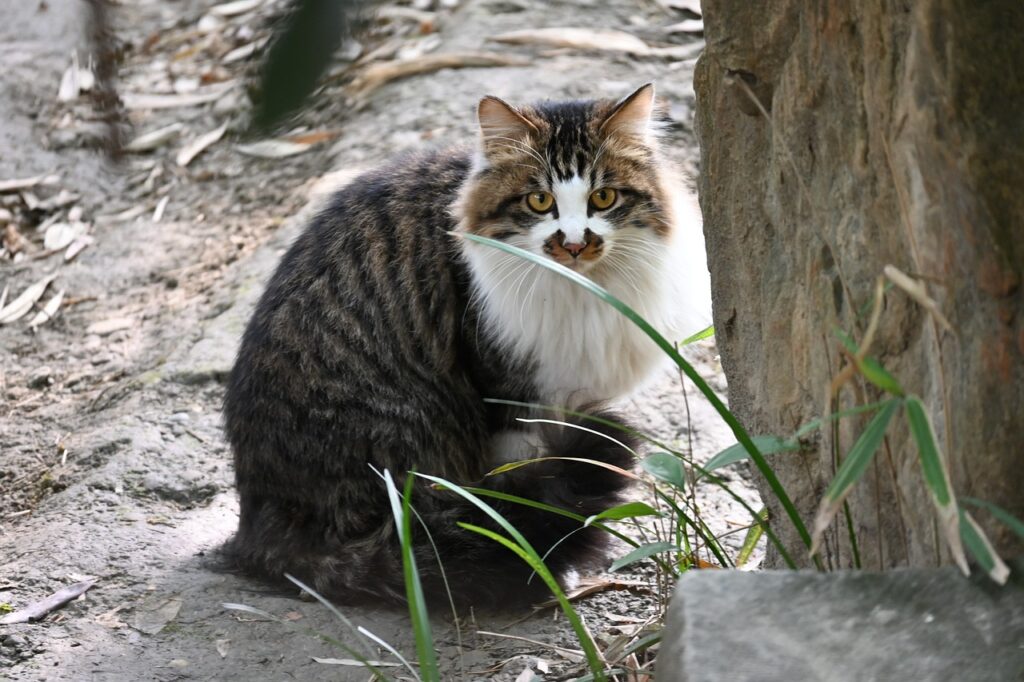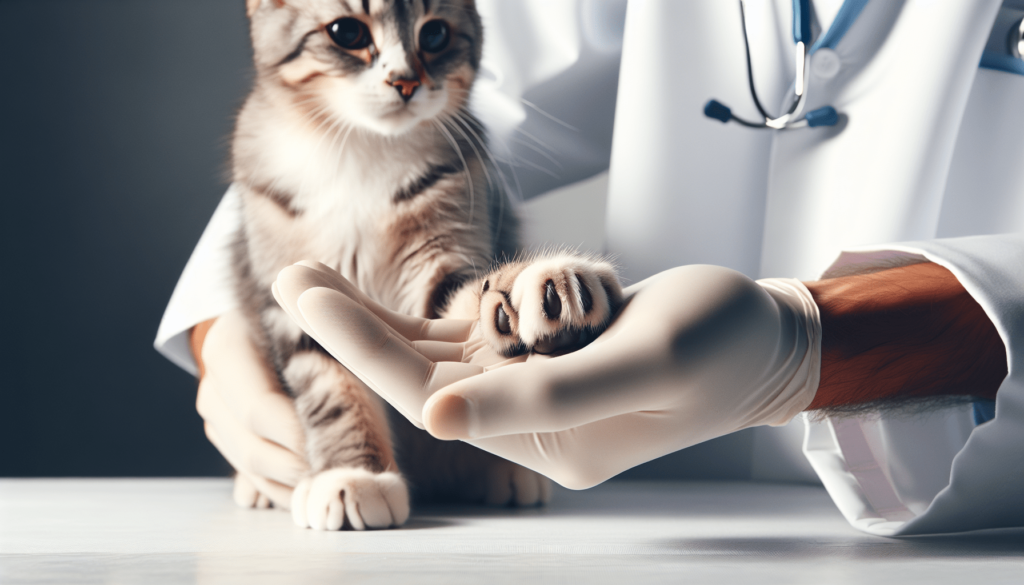So you’ve found a stray cat and you’re curious about its age? Look no further! In this article, we will guide you through some key indicators that can help you estimate a cat’s age. From examining their teeth to observing their physical features, we’ve got you covered. By the end, you’ll be equipped with the knowledge to make an educated guess about the age of any feline companion that crosses your path. Let’s get started!
Understanding a Cat’s Lifespan

Defining a cat’s lifespan
A cat’s lifespan refers to the number of years that a cat is expected to live. It is influenced by various factors such as genetics, environment, and individual health. On average, domestic cats have a lifespan of about 15 to 20 years, but some cats can live well into their twenties. Understanding a cat’s lifespan can help cat owners better care for their feline companions throughout their lives.
Comparing a cat’s lifespan to human years
To understand a cat’s lifespan, it can be helpful to compare it to human years. The general rule of thumb is that one cat year is roughly equivalent to four human years. However, this ratio can vary depending on the cat’s breed, size, and overall health. It’s important to note that cats age at a faster rate than humans, especially during the early years of their lives.
Factors that influence a cat’s lifespan
Several factors can influence a cat’s lifespan. Genetics play a significant role, as certain breeds may have predispositions to certain health conditions or have longer lifespans compared to others. The environment in which a cat lives also plays a crucial role, as a safe and stimulating environment can promote better health and prolong a cat’s lifespan. Additionally, diet, exercise, veterinary care, and overall quality of care can all impact a cat’s lifespan. By providing proper care and attention to these factors, cat owners can help ensure their feline companions live longer, healthier lives.
Observing Physical Characteristics
Examining the cat’s size and shape
When trying to gauge a cat’s age, observing its size and shape can provide valuable clues. Kittens are generally smaller and have a more slender build, while adult cats are larger and have a more muscular body structure. As cats age, they may start to lose muscle mass and become thinner. These changes in size and shape can give you an indication of where your cat is in its lifespan.
Looking for signs of aging in the fur
Another telltale sign of a cat’s age is its fur. Kittens typically have soft and fluffy fur, while adult cats may have a more sleek and shiny coat. As cats get older, their fur may start to lose its luster and become duller. Additionally, older cats may develop patches of gray or white hair, particularly around their face, giving them a distinguished appearance. By observing the condition and color of a cat’s fur, you can gain insights into its age.
Checking for wear and tear on the cat’s paws
The condition of a cat’s paws can also provide clues about its age. Kittens usually have soft and smooth paw pads, while adult cats tend to have more calloused pads. As cats age, their paw pads may become rougher and show signs of wear and tear. Older cats may also develop arthritis, which can lead to changes in the way they walk or put pressure on their paws. By examining the condition of a cat’s paws, you can get an idea of its age and overall health.
Inspecting for changes in the eyes
The eyes can be windows into a cat’s age and health. When cats are young, their eyes are usually bright, clear, and free from any cloudiness. As cats age, their eyes may develop a bluish haze or have a slight cloudiness. Additionally, older cats may have dilated pupils and a yellowish discoloration in the whites of their eyes, which can be signs of age-related changes or underlying health issues. Regularly checking a cat’s eyes can help you monitor its age and detect any potential health concerns.
Checking the Cat’s Teeth
Looking for dental development in kittens
Examining a cat’s teeth can provide valuable information about its age. In kittens, the eruption of teeth can be a good indicator of age. Kittens generally start to get their baby (deciduous) teeth at around 3 to 4 weeks old, which are then replaced by permanent teeth as they grow. By observing the development and presence of teeth in kittens, you can estimate their age within a certain range.
Identifying stages of dental aging in mature cats
In mature cats, the condition of their teeth can provide insights into their age. Adult cats typically have a full set of teeth, including incisors, canines, premolars, and molars. However, as cats age, their teeth may start to show signs of wear, tartar buildup, and even tooth loss. By assessing the condition of a cat’s teeth, a rough estimate of its age can be made.
Recognizing signs of dental disease in older cats
Dental disease is common in older cats and can significantly impact their overall health and lifespan. Signs of dental disease include bad breath, red or swollen gums, excessive drooling, difficulty eating, and loose or missing teeth. If you notice any of these signs, it’s important to consult with a veterinarian for appropriate dental care. Regular dental check-ups and proper oral hygiene can help prevent dental disease and ensure a cat’s dental health throughout its life.
Evaluating the Cat’s Weight

Identifying typical weight ranges for different ages
Cats come in various shapes and sizes, and their weight can vary depending on factors such as breed, genetics, and overall health. Generally, kittens have a lower birth weight and gradually gain weight as they grow. Adult cats have a stable weight range that can differ from breed to breed. By familiarizing yourself with the typical weight ranges for different ages and breeds, you can evaluate if your cat falls within a healthy weight range.
Recognizing weight changes that come with age
As cats age, it’s common for them to experience changes in their weight. Some cats may gain weight due to decreased activity levels or metabolic changes, while others may lose weight due to age-related conditions or dental issues. Regularly monitoring your cat’s weight and comparing it to its ideal weight range can help you identify any significant changes that may require further investigation or intervention.
Interpreting weight fluctuations as signs of health issues
Significant weight fluctuations in cats should never be ignored, as they can be indicative of underlying health issues. Unexplained weight loss or persistent weight gain can be signs of various health conditions such as diabetes, hyperthyroidism, kidney disease, or gastrointestinal problems. If you notice any concerning changes in your cat’s weight, it’s essential to consult with a veterinarian for a proper evaluation and diagnosis.
Assessing the Cat’s Behavior
Looking for behavioral changes over time
A cat’s behavior can provide valuable insights into its age and overall well-being. Kittens are typically more active and playful, while adult cats are generally more settled and have established behavior patterns. As cats age, they may become less active, sleep more, or exhibit changes in their interactions with humans or other pets. By observing and monitoring your cat’s behavior over time, you can detect any significant changes that may indicate age-related changes or underlying health issues.
Understanding behavioral differences in kittens, adult, and senior cats
Different stages of a cat’s life are accompanied by distinct behavioral characteristics. Kittens are full of energy and curiosity, often engaging in play and exploratory behaviors. Adult cats tend to be more independent and may display hunting instincts. Senior cats may become more reserved, less active, and may require more comfort and attention. Recognizing these behavioral differences can help you understand where your cat is in its lifespan and provide appropriate care accordingly.

Recognizing behavioral signs of underlying health issues
Changes in a cat’s behavior can sometimes be indicative of underlying health issues. For example, increased aggression, excessive vocalization, or sudden changes in litter box habits may be signs of pain, discomfort, or an underlying medical condition. It’s important to pay attention to any significant changes in your cat’s behavior and consult with a veterinarian if you have any concerns. Early detection and intervention can greatly improve your cat’s quality of life and overall lifespan.
Evaluating the Cat’s Hearing and Vision
Recognizing signs of hearing loss
A cat’s hearing can be affected by age-related changes or underlying health conditions. Signs of hearing loss in cats can include not responding to sounds, being easily startled, or not being able to locate the source of a sound. If you suspect that your cat may be experiencing hearing loss, it’s important to consult with a veterinarian for a thorough examination. While age-related hearing loss may be irreversible, managing your cat’s environment and providing appropriate care can help ensure its safety and comfort.
Identifying signs of vision loss
Just like humans, cats can experience vision loss as they age. Common signs of vision loss in cats include bumping into objects, hesitancy to explore unfamiliar environments, dilated pupils, or cloudy-looking eyes. If you notice any of these signs, it’s crucial to have your cat’s eyes examined by a veterinarian. While some forms of vision loss may not be reversible, there are management strategies and treatments that can help improve a cat’s quality of life.
Understanding changes in sensory abilities with age
As cats age, their sensory abilities, including hearing and vision, may naturally decline. These changes can affect their overall behavior, interaction, and ability to navigate their surroundings. By understanding and acknowledging these age-related changes, cat owners can adjust their caregiving strategies to ensure their feline companions’ safety and well-being. Providing a familiar and enriched environment, minimizing hazards, and maintaining regular veterinary check-ups are essential for supporting cats with age-related sensory decline.
Interpreting the Cat’s Coat and Skin Condition
Understanding changes in coat color and texture
A cat’s coat can provide valuable information about its age, health, and overall well-being. As cats age, their coat color may change, and certain breeds may develop specific coat patterns. Additionally, older cats may experience changes in the texture of their fur, with it becoming coarser, thinner, or more prone to matting. By observing the changes in a cat’s coat color and texture, you can gain insights into its age and potential health issues.

Identifying skin elasticity as a sign of age
Skin elasticity is another factor to consider when evaluating a cat’s age. Young cats generally have more elastic and supple skin, while older cats may have looser and less elastic skin. Additionally, skin that takes longer to revert to its original position after being gently pulled can also be an indication of age. However, it’s important to note that skin elasticity can also be influenced by hydration levels and overall health, so it should be considered in combination with other factors.
Recognizing signs of skin conditions common in older cats
As cats age, they may become more susceptible to various skin conditions. Common skin issues in older cats include dryness, flakiness, sores, or lumps. These can be caused by factors such as allergies, infections, hormonal imbalances, or underlying health conditions. Regularly inspecting your cat’s skin and consulting with a veterinarian if you notice any concerning changes can help prevent and manage these skin conditions, ultimately promoting your cat’s overall comfort and well-being.
Analyzing the Cat’s Muscle Tone and Bone Structure
Interpreting changes in muscle tone
Muscle tone can provide valuable insights into a cat’s age and overall health. Kittens typically have softer, less developed muscles compared to adult cats. As cats reach adulthood, their muscles become more defined and toned. However, as cats age, they may start to lose muscle mass, leading to a decrease in muscle tone or a more frail appearance. Regularly observing and evaluating your cat’s muscle tone can help you identify any significant changes that may indicate age-related muscle loss or underlying health issues.
Understanding changes in bone structure with age
As cats age, their bone structure may also undergo changes. Older cats may develop a more prominent spine, hip bones, or shoulder blades due to age-related muscle loss or degenerative conditions such as arthritis. Changes in bone structure can affect a cat’s overall mobility and comfort. If you notice any changes in your cat’s bone structure, it’s prudent to consult with a veterinarian for a thorough evaluation and appropriate management strategies.
Recognizing signs of arthritis and other age-related conditions
Arthritis is a common condition in older cats and can significantly impact their quality of life. Signs of arthritis can include stiffness, difficulty jumping or climbing, decreased mobility, and a more sedentary lifestyle. Additionally, older cats may be more prone to other age-related conditions such as osteoporosis or degenerative joint diseases. Regular veterinary check-ups, appropriate exercise, and providing a comfortable environment that minimizes strain on joints can help manage these conditions and support your cat’s overall well-being.
Monitoring the Cat’s Eating Habits
Observing changes in appetite
A cat’s eating habits can provide insights into its age and overall health. Kittens usually have a high appetite as they need more nutrients for growth and development. As cats reach adulthood, their appetite typically stabilizes. However, as cats age, their appetite may decrease due to a variety of factors such as changes in metabolism, dental issues, or underlying health conditions. Monitoring your cat’s eating habits and being observant of any significant changes can help you identify potential concerns and ensure appropriate care.
Identifying food preferences at different ages
Cats’ dietary preferences can change as they grow older, and it’s important to accommodate these changes to ensure they receive proper nutrition. Kittens have specific dietary needs and should be fed a balanced diet specially formulated for their growth. Adult cats may have specific preferences for certain flavors or textures. Senior cats may require diets that support their aging bodies, such as those formulated for joint health or to address age-related conditions. Offering a variety of high-quality, age-appropriate food options and consulting with a veterinarian can help address your cat’s changing dietary preferences.
Recognizing signs of dietary issues associated with age
Some older cats may develop dietary issues as they age, such as a decreased appetite, difficulty chewing, or gastrointestinal sensitivities. These issues may be caused by age-related changes, dental problems, or underlying health conditions. If you notice any concerning changes in your cat’s eating habits, such as prolonged refusal of food, vomiting, or diarrhea, it’s crucial to consult with a veterinarian for a proper evaluation and guidance on managing your cat’s diet to ensure its nutritional needs are met.
Consulting with a Veterinarian
Understanding the importance of regular vet check-ups
Regular veterinary check-ups are essential for maintaining your cat’s health and well-being at every stage of its life. Veterinarians are trained to assess and evaluate cats’ physical condition, detect early signs of health issues, and provide appropriate care and treatment. Routine check-ups allow veterinarians to monitor a cat’s overall health and take proactive measures to prevent, manage, or treat any potential health concerns. By making regular vet visits a priority, you can ensure your cat receives the necessary care and support throughout its life.
Discussing age-related concerns with the veterinarian
During veterinary check-ups, it’s important to discuss any age-related concerns or observations you have regarding your cat’s health and behavior. Sharing specific details about changes in your cat’s weight, eating habits, behavior, or physical appearance can help the veterinarian make a more accurate assessment. Veterinarians can provide guidance on age-appropriate care, discuss potential health issues associated with aging, and recommend preventive measures or treatments to enhance your cat’s quality of life.
Interpreting the results of physical exams and tests
Veterinarians may conduct physical exams and tests to gather more information about your cat’s health and assess any potential age-related concerns. These exams may include assessing body condition, temperature, heart and lung function, dental health, and conducting blood or urine tests to evaluate organ function. By interpreting the results of these exams and tests, veterinarians can provide a comprehensive evaluation of your cat’s health status, identify any issues, and recommend appropriate treatments or interventions to optimize your cat’s well-being.
In conclusion, understanding a cat’s lifespan involves observing various physical characteristics and behaviors that can provide insights into their age and overall health. By evaluating factors such as size, fur condition, dental health, weight, behavior, senses, coat and skin condition, muscle tone, bone structure, eating habits, and consulting with a veterinarian regularly, cat owners can ensure their feline companions receive adequate care and support throughout their lives. By being proactive and attentive to these aspects, cat owners can enhance their cat’s quality of life and ensure they enjoy a long and healthy lifespan. Remember, your cat’s well-being is in your hands, so cherish and care for them as they journey through their lives with you.

